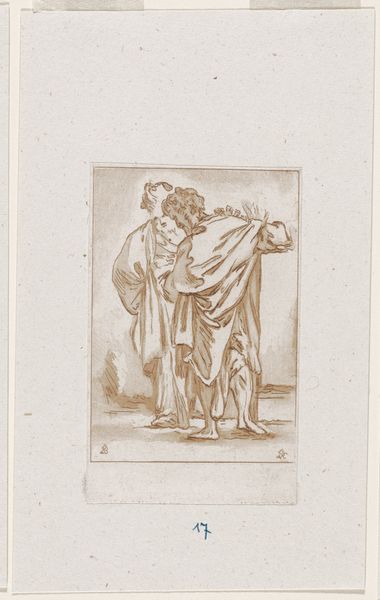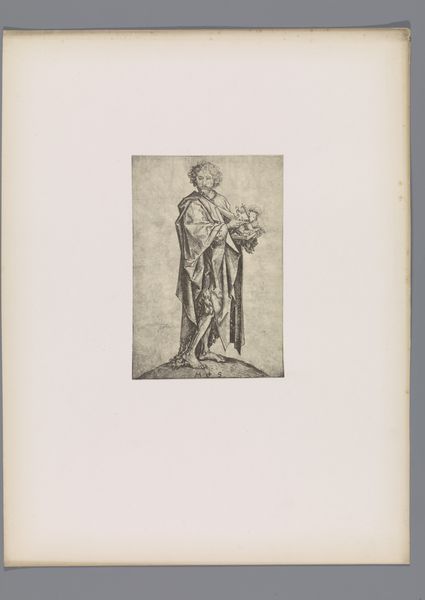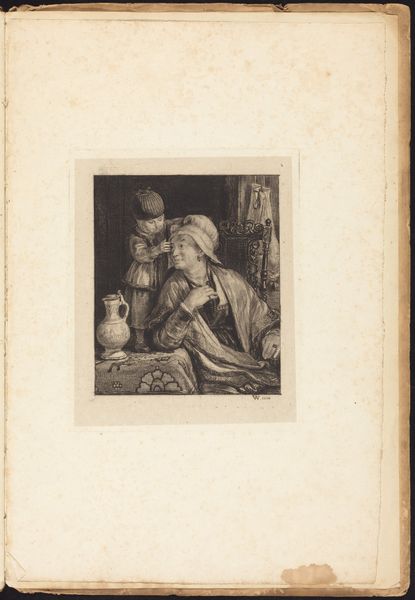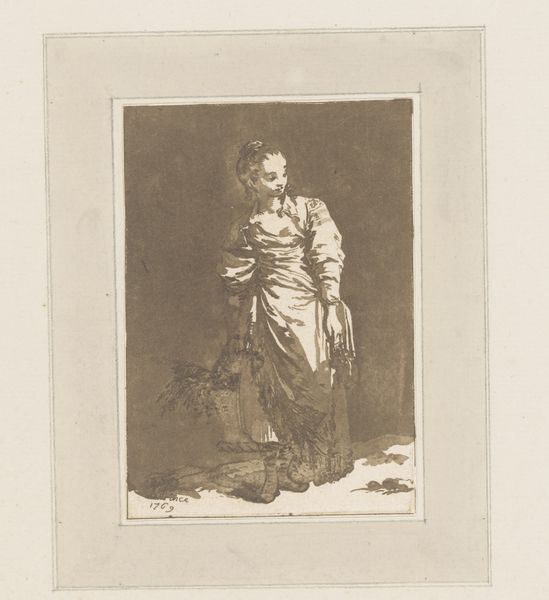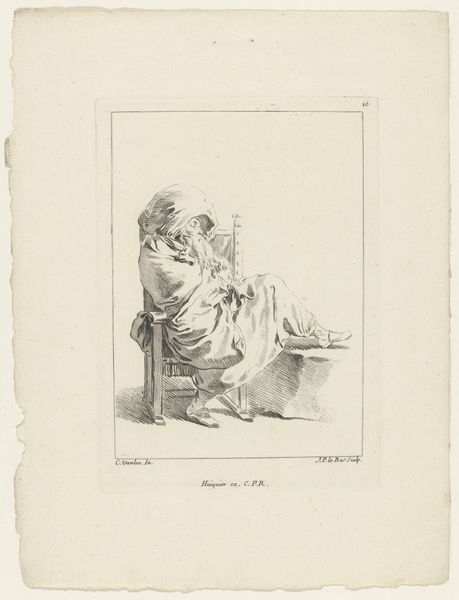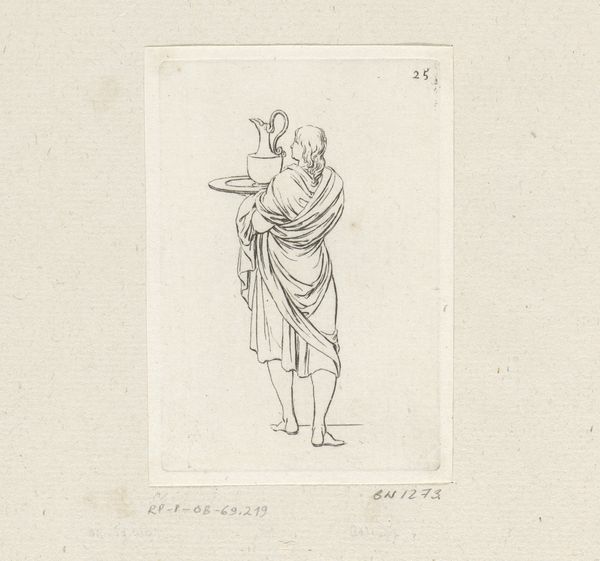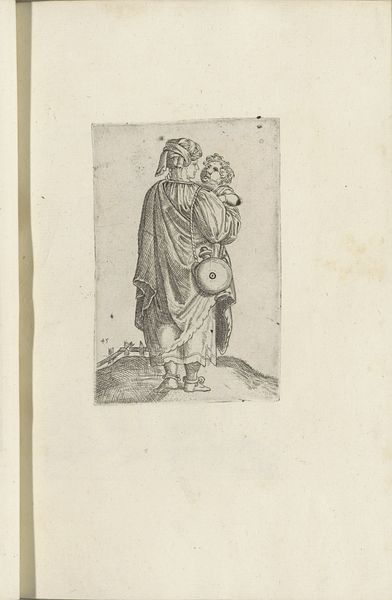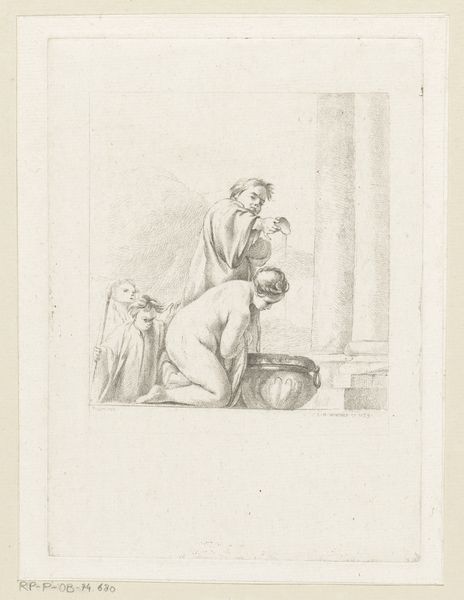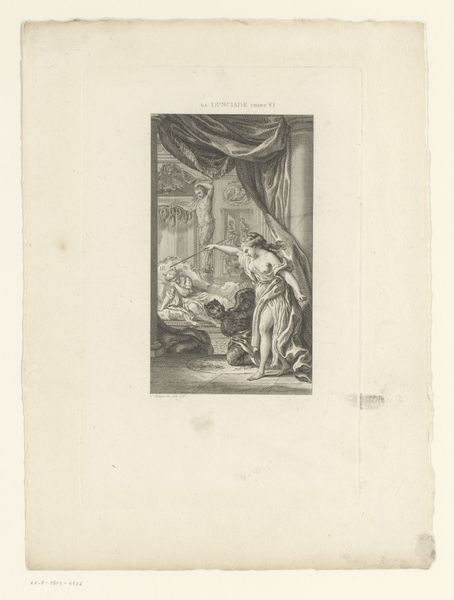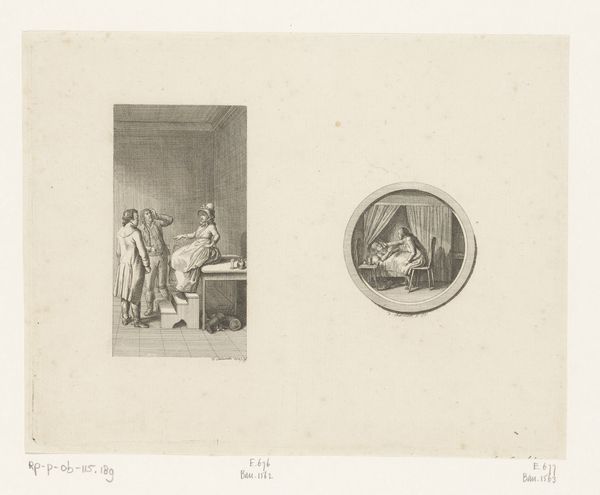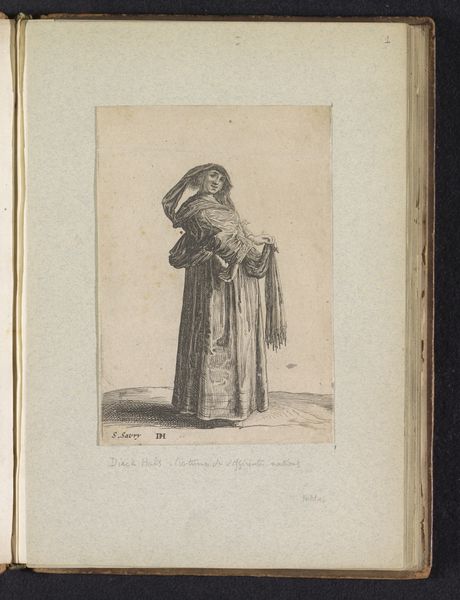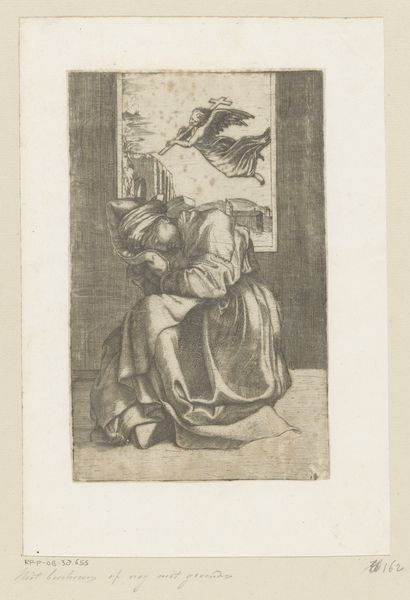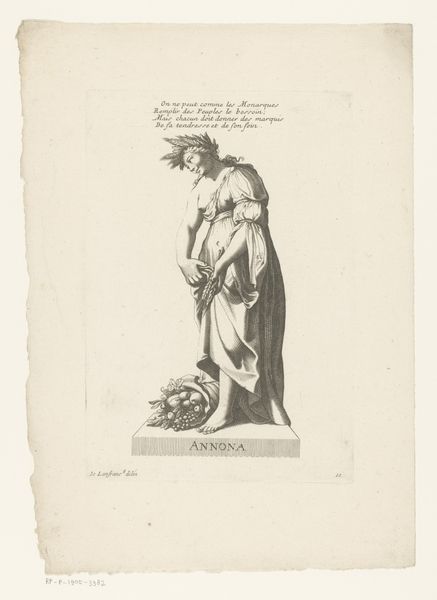
Dimensions: 3 1/4 x 2 3/8 in. (8.26 x 6.03 cm) (sheet, each, trimmed within platemark)
Copyright: Public Domain
Curator: Let’s turn our attention to "Suite de sept petits croquis," or "Suite of Seven Small Sketches," dating back to 1766. It's attributed to François Philippe Charpentier, a French artist of the Baroque era, and it's a fascinating etching currently housed here at the Minneapolis Institute of Art. Editor: Immediately, I'm drawn to the almost mournful posture of the central figure. He leans heavily on what looks like a staff, his face obscured. There's a palpable sense of weariness, a burden etched quite literally into the lines of the image. Curator: Absolutely. The figure embodies the historical treatment of marginalized people through that very image of weariness. This piece offers us an avenue to reflect on systems that exploit vulnerability for socioeconomic or political ends. Notice his almost fragmented relationship to his garment. It seems to simultaneously shroud and fail to protect him. Editor: The clothing, though draped somewhat classically, also contributes to this symbolism of dejection. His state also seems related to various depictions of wandering ascetics or perhaps even mythological figures experiencing their own forms of hardship. Do you see an echo of, say, a fallen Hercules in his downcast posture? Curator: Perhaps not explicitly a classical hero, but the figure invites interpretation within broader narratives of suffering. It critiques systems that push individuals into states of desperation. How the individual experiences their body under constraint – physically and symbolically – is absolutely vital to the study of social discipline. Editor: Agreed, and even the staff he leans on could represent, in that symbolic vein, a source of meager comfort or perhaps his dwindling connection to the earth, the soil, to a sustaining force. It’s not just an object for walking, but for clinging to what remains. Curator: Yes, that image of “clinging” is evocative because it signals a dependency brought on by larger socio-political and economic issues that create conditions of poverty. Editor: The entire scene feels remarkably complete for being just a sketch. The composition steers us right into the emotional core of this anonymous, perhaps everyman figure, carrying a load. Curator: By recognizing the historical and symbolic significance of these symbols, hopefully we're all able to see a work that continues to resonate today within a whole new framework of social awareness. Editor: Indeed. It encourages us to not only consider the past, but connect to our own, modern understandings of those timeless human experiences—and symbols—related to hardship.
Comments
No comments
Be the first to comment and join the conversation on the ultimate creative platform.
